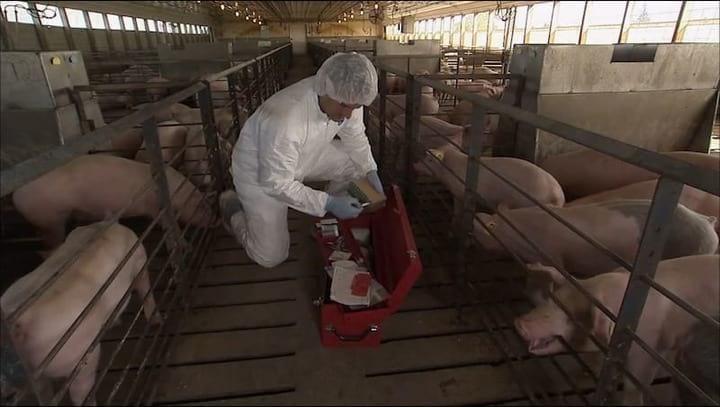Is spray-dried porcine plasma a vector responsible for PED? L. Russell (APC)
Published: September 12, 2014
Related topics:
Mentioned in this news release:
APC, Inc.
Recommend
Comment
Share
1 de octubre de 2014
Yes i have heard the discussions through the net vidio program on PED virus on spray dried porcine plasma a vector responsible for PED. Ok discussion was good when we intend to use this product as a part of feed ingredient. Protein and energy is costing feed and we locate some source of protein from the animal waste and we can think why we use ? Is there any way out for searching such protein like fishmeal, meatmeal, plasma spray dried from blood from slaughter house waste and other waste area? I feel we can opt out for veg protein and allow animal bi products to circulate on land as biological fertilizer properly as per need. Well such issues would continue and we have to find vaccine and fight to all diseases all the time and we get success when we go for bio security norms and we have to feel what we are feeding and why?
It was a good long debate and i liked it. thank you . dr mrath
Recommend
Reply
1 de octubre de 2014
Mr. Rath, you are missing the point entirely. Removing animal proteins from the diet and replacing them with vegetable proteins - if fed from a contaminated environment - achieves nothing. The key is noting that processing techniques used for these proteins achieve multiple pathogen kill steps and so as produced are free of these viruses. Removing porcine plasma, dried porcine solubles, and other highly functional proteins can actually be considered in a negative light as the functional aspects of these proteins may not be seen in replacement proteins.
Recommend
Reply
1 de octubre de 2014
There's no question that a process can be designed to effectively control PEDv. The key, as mentioned in the video, is process control points, GMP's, HACCP - activities that occur at the plant. Therefore, it is critical to follow processing guidelines, with the appropriate quality controls to detect any potential problems. This is where the risk comes in - are the quality controls being followed, day after day? Could one batch slip through?
Recommend
Reply


Responses of Bacillus amyloliquefaciens CECT 5940 supplementation in weaned pig diets
Suggested link
1 de octubre de 2014
Great question! With products in this category, heat treatment is the primary pathogen kill step. To properly process the material into dry specific temperatures, and sometimes time/temperature relationships, achieve the final product while ensuring the kill step. An important secondary kill step, no less important and no less effective, is that these viruses cannot survive for more than a short period of time on a dry substrate (in this case, the dried product itself). The video accurately describes the substantial testing that has been done on virus survivability on dry product - typically 7 days or less and even at unusual (yet favorable to the virus) temperatures...not more than 14 days. Manufacturers now consider this in their production and distribution. So, as I said in my earlier posting - the issues to be concerned about come from post-production contamination and this can occur on any feed ingredient or material.
Recommend
Reply
1

Would you like to discuss another topic? Create a new post to engage with experts in the community.










.jpg&w=3840&q=75)
.jpg&w=3840&q=75)




